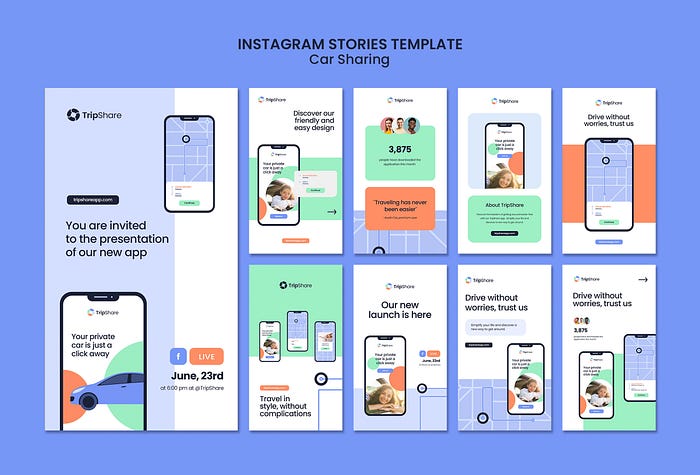
A great mobile app doesn’t just look good—it feels effortless to use. When users can smoothly navigate from one action to the next without confusion, frustration, or delay, that’s the magic of perfect user flow.
Designing for that kind of seamless experience requires a deep understanding of mobile UI design principles — where every interaction, layout, and element supports the user’s journey from start to finish.
In this blog, we’ll explore the core principles of mobile UI design that help designers build apps users love—and never want to leave.
1. Keep It Simple and Intuitive
Simplicity is the cornerstone of great mobile design.
Every element on the screen should serve a clear purpose. Overloading the interface with too many buttons, animations, or options only distracts and confuses users.
A clean and minimal layout helps users focus on what matters most—the task they came to accomplish.
Best Practices:
- Prioritize one main action per screen.
- Use familiar icons and gestures.
- Keep text short, clear, and readable.
- Eliminate unnecessary steps or distractions.
Pro Tip: Use progressive disclosure—show advanced options only when needed.
2. Prioritize Consistent Navigation
Consistency helps users predict what will happen next. Your navigation should feel familiar and predictable, allowing users to move effortlessly through the app.
From icons and menus to placement and transitions, every detail contributes to a fluid user experience.
Best Practices:
- Stick to standard patterns (like bottom navigation or hamburger menus).
- Ensure navigation labels are clear and descriptive.
- Maintain consistent positioning across screens.
- Provide visible feedback when users tap or scroll.
Pro Tip: Test navigation flow with real users before finalizing the layout—it often reveals hidden friction points.
3. Design with Thumb-Friendly Interaction
Most mobile users navigate with their thumbs. That means your design must accommodate comfortable, one-handed use.
Important buttons, menus, and CTAs should be within easy reach—especially on large-screen devices.
Best Practices:
- Place key actions in the “thumb zone” (lower center of the screen).
- Avoid placing essential elements in top corners.
- Increase touch target size (minimum 48×48 pixels).
Pro Tip: Map out your app’s thumb zone using mockups to ensure ergonomic design.
4. Establish a Clear Visual Hierarchy
Users should instantly know where to look first. That’s where visual hierarchy comes in—it guides users’ eyes through your interface, emphasizing the most important information.
Through typography, color, contrast, and spacing, designers can establish a natural flow that leads users toward their next action.
Best Practices:
- Use size and color to highlight key elements.
- Keep primary buttons visually distinct.
- Group related content together.
- Use whitespace strategically for breathing room.
Pro Tip: If everything stands out, nothing does. Choose one primary action per screen to emphasize.
5. Optimize Loading Time and Performance
Speed plays a huge role in user flow. Even the best UI design can fail if your app feels slow or unresponsive.
Users expect instant feedback—every delay risks losing their attention.
Best Practices:
- Compress images and optimize assets.
- Use loading animations or skeleton screens to show progress.
- Cache data for offline performance.
- Test performance on low-end devices.
Pro Tip: Keep transitions under 300ms for a natural, responsive feel.
6. Create Meaningful Micro-Interactions
Micro-interactions are small, subtle animations or responses that make your app feel alive.
For example, a “like” button that pulses or a checkmark that appears when a task is done—they help users understand that the system has acknowledged their actions.
Best Practices:
- Use animations to guide, not distract.
- Provide instant visual feedback for every interaction.
- Keep transitions smooth and purposeful.
Pro Tip: A well-timed micro-interaction can make even simple actions feel rewarding.
7. Maintain Consistency Across Platforms
Whether users are on iOS or Android, your app should feel native while keeping your brand identity consistent.
Platform-specific design conventions build trust because users already know how to navigate those interfaces.
Best Practices:
- Follow Apple’s Human Interface Guidelines (HIG) and Google’s Material Design principles.
- Keep brand colors and components consistent across screens.
- Avoid reinventing core patterns like back navigation or modals.
Pro Tip: Consistency = confidence. Familiarity makes users more comfortable and engaged.
8. Prioritize Accessibility and Inclusivity
A truly great user flow works for everyone. Designing for accessibility ensures your app can be used by people of all abilities.
Best Practices:
- Use high-contrast colors for readability.
- Add alt text for icons and images.
- Enable larger font options.
- Design with screen reader compatibility.
Pro Tip: Test your design using accessibility tools like Stark or Axe to catch hidden issues early.
9. Guide Users with Onboarding
A smooth onboarding experience helps users understand your app faster—and reduces drop-offs.
Instead of overwhelming them with too much information, use simple walkthroughs, visuals, or micro-interactions to explain key features.
Best Practices:
- Use progressive onboarding—teach as users explore.
- Keep tutorials short and optional.
- Reinforce learning with contextual hints or tooltips.
Pro Tip: A great first impression sets the tone for long-term engagement.
10. Test and Refine the User Flow
Even the best design needs validation. Regular testing ensures that your user flow actually works as intended.
Use usability testing, A/B testing, and analytics tools to identify where users drop off or get confused.
Best Practices:
- Observe real users completing key tasks.
- Track interactions to find friction points.
- Iterate continuously based on feedback.
Pro Tip: Data + empathy = perfect user flow.
Conclusion
Creating a seamless user flow in mobile design is a balance of clarity, consistency, and empathy. By understanding how users think, move, and interact, designers can build intuitive interfaces that feel natural and effortless.
Every tap, swipe, and scroll should bring users closer to their goals—not slow them down.
At Devoq Design, we specialize in crafting intuitive mobile interfaces that enhance usability and user satisfaction. As a leading UI/UX Design Agency, we ensure every mobile experience flows perfectly—from the first tap to the final interaction.


